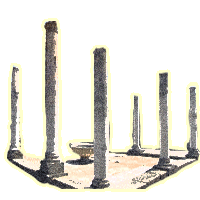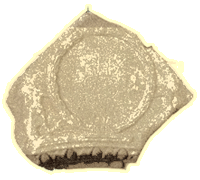 |
||

V I M I N A C I U M |
||
|
Viminacium was devastated and destroyed in the middle of the 5th century, and it remained forgotten and buried like Pompeii, which disappeared under a flood of lava from Vesuvius in 79 A.D.. That analogy and the recognition that the remains of the Roman town and the military camp represent a site of exceptional interest explains why Viminacium has been called the Balkan Pompeii. The Roman camp (castrum) in Viminacium was built in the early decades of the 1st century A.D. The existence of a previous earthwork at the very beginning of that century and associated with one of the first Moesian legions, the IV Scythica or the V Macedonica, may be assumed, although it has not been attested by archaeological evidence. The construction of the earliest stone fortifications, around the middle or in the second half of the 1st century A.D., is associated with the VII legio Claudia, which was stationed here throughout the classical period. The approximate dimensions of the camp are 443 x 387 meters. Its remains have been found on the right bank of the Mlava river as early as the 18th century. The remains of the entrance gate, with massive pavements, a cloaca and richly decorated architectural elements show that the camp was a part of the mighty defence system on the northern frontier of the Empire. The find of a hoard of bronze coins dating from the period from the early 4th century to the middle of the 5th century A.D. is a testimony of the imperilled state of the camp, which was abandoned during the Hunnic invasion of 441 A.D. and never regained its former importance. The aerial photos and the geo-radar and geomagnetic surveys of the site give us a reliable picture of the camp with its defence walls, gates, towers and an administrative building (praetoria) lying beneath the fertile farmlands of Stig. ... Continue |
... AQUEDUCT:
About 1,000 meters of the Roman aqueduct has been excavated. Geophysical methods showed another 1,800 meters, while remote detection found an additional 1,350 meters of it. The aqueduct was built of stone, bound with lime mortar. The sides of the aqueduct were covered with lime mortar too, and the underneath layer was made of water resistant mortar. The bottom was built of fire-baked bricks with stamps of the Roman legions that have built it. In the upper part, the aqueduct was covered with massive floor bricks. Its total length was about 10 kilometers and it brought potable water to the ancient town and military camp of Viminacium. THE BATHS : (thermae) are typical Roman buildings. As public establishments, they appear in the time of the Empire both in Rome and in the provinces. They served not only for personal hygiene, but also for relaxation and various social activities. Their architectural form varied from town to town. The baths of Viminacium are distinguished not only by their luxury but also by their architectural design. THE TRIPLE APSIDAL CHURCH A triple apsidal church located in a cemetery. It was discovered during the clearing of the terrain with heavy machines, so that it was partly destroyed (the greater part of the western conch). The extant length of the church with the porch is 15.50 meters (13.20 meters without the porch), and the width of its eastern part is 8.03 meters. The distance between the crowns of the north and south conch is 12.80 (external measure). The walls of the conchs are 1 meter thick. The church is built of greenstone rubble bonded by lime plaster. Bronze coins are set into the walls in numerous places. The floor is made of lime plaster. In 1979 the Serbian Assembly declared Viminacium a cultural monument of exceptional importance.  TOP
TOP
|
|
  
|
||











